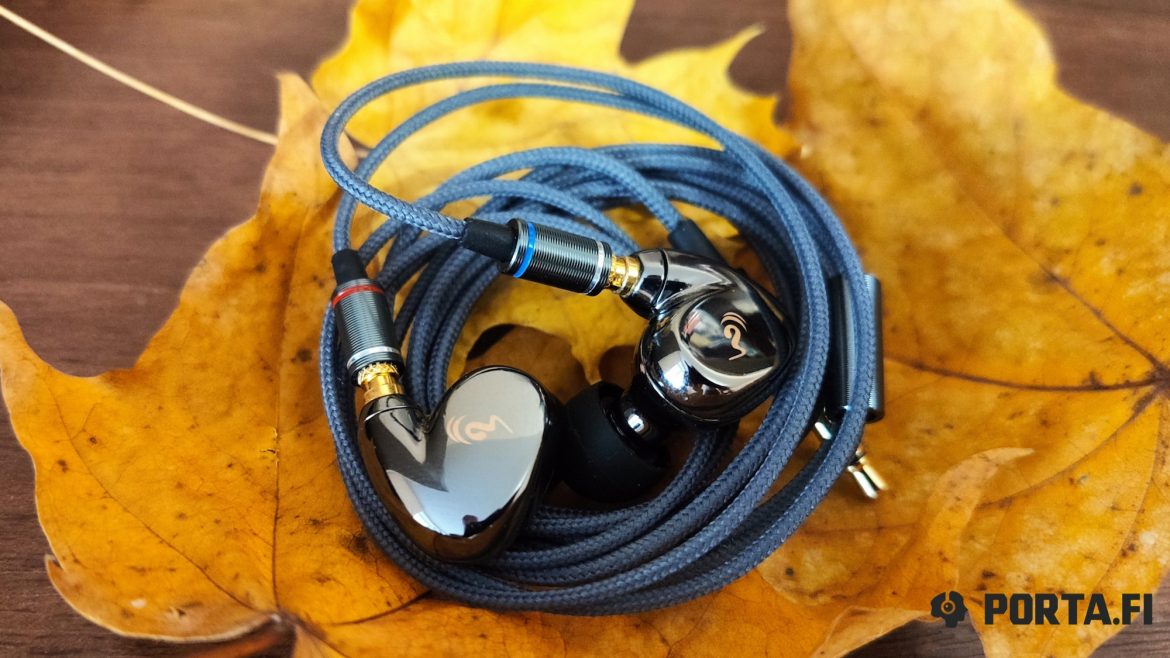For quite a time I have oBravo headphones as one of my main IEMs. To be honest, I have bought them just of curiosity and for a review and have thought I will have to sell them, but this is the path of all reviewers. Anyway my interest has been stronger than the risk to lose money on resell. But here I have got a pleasant surprise. The IEMs don’t only sound mature, but have convinced me to keep them. Also this model have aroused my interest to other products of this brand. So as soon as I could get hold of more budget model of this brand, I couldn’t resist. And today we will speak about oBravo Cupid.
Accessories and packaging
I won’t dig deep into this, will just underline some things.
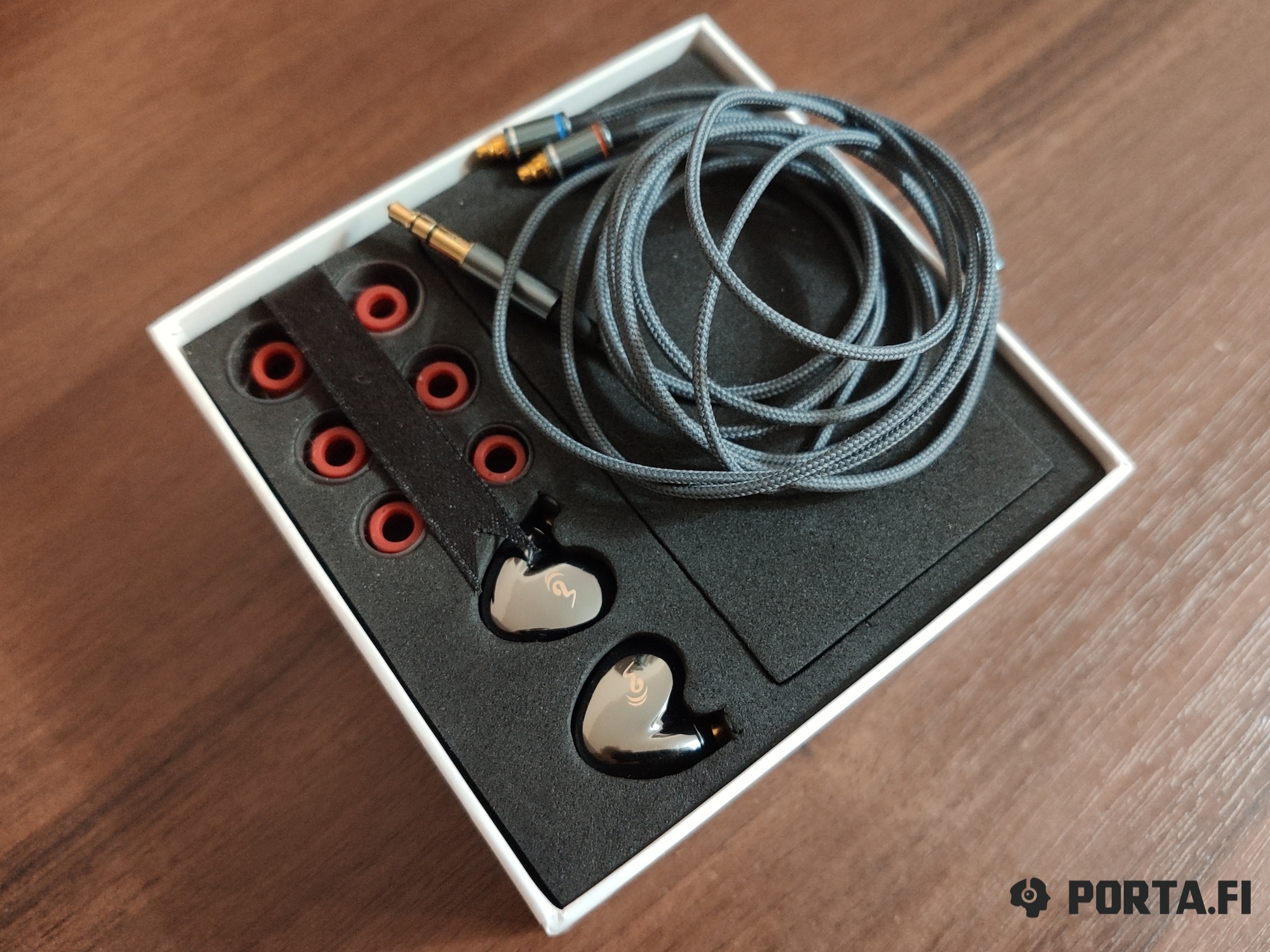
First of all, the box is rather modest in terms of size and doesn’t tend to impress. White background, the photo of IEMs, their name, specifications on the back. The contents of the box is also in line with the price tag. We get IEMs, cable, tips and clamp band. That’s it. Given the contents, the box might be even smaller. I would like to see some pouch but there is none. The model is budget for this brand, so we get only the needed minimum.
Design and comfort
Model should be worn over-ear. The body is made of metal and has mirror-like surface. On the outer part there is a laser engraved company logo. It is noticeable but you can easily see it. The body shape reminds of heart (not as love, but as body organ). For me the analogy is quite good, given the name of the model. The body is a magnet for fingerprints, but they are easily cleaned. This means they look neat even on photos.
The bodies are quite large and have notable weight, but I can’t say that they are very thick. You should just keep in mind that we have hybrids with two drivers. The first is 8mm patented planar transducer of the 2nd generation. For lows support there is also 6mm neodym dynamic transducer. As a result we get 16 Ohms of impedance. There are no sensitivity measurements on the box, but on practice they are average. I like them better on a high gain, but even on the low gain the loudness reserve is good. IEMs do not hiss from any source, but are not hard to drive, especially not as the models with one planar transducer.
The nozzle is quite long, wide (standard size), but the projection for tip holding is not large. Stock tips hold very well and there are no problems in that. If we use tips with narrow nozzle they might fall off. The shape of headphones is well thought over, and even if the body is quite large and weighty, they fit well. Stock tips have wide nozzle and special shape inside the tip. I have seen such kind of tips on AliExpress. Their presence is a good step since erib-1a had only foam tips. And here we get stock silicone ones that fulfill their function well. I have tried Spiral Dot of usual and ++ versions and I liked the result. Nevertheless, stock ones are good and if they fit you well, there is no sense in seeking for something else.
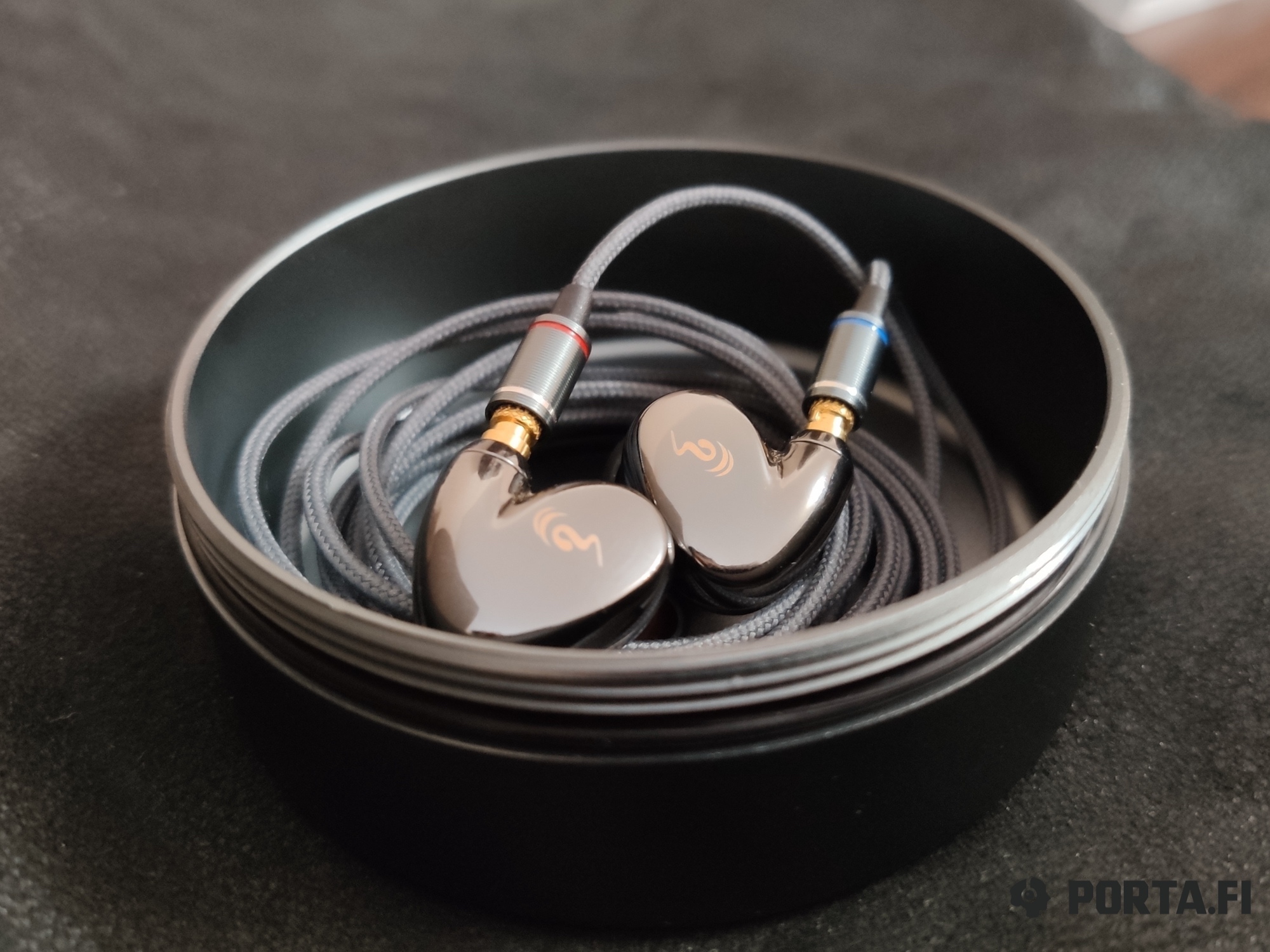
Among the nuances I’d like to underline are the cable connectors. They look like DIY to some extent. Apart from that, note that the sockets are custom and not compatible with other MMCX. In fact it is MMCX but dipped into special basement. If you have needed accuracy and some spare time, you can turn them into standard MMCX sockets by removing this basement, but this will make warranty void. I can’t recommend this approach for these reasons.
Cable
As for stock cable, I can say it’s thin. On most photos the IEMs are depicted very close, and the cable looks thick because of it, but it is not the case. Even more — it’s one of the thinnest cables I have ever seen, if we speak about fabric coated cables. It’s not Linum of course, but still. If we coat SuperBax into such fabric isolation, who knows, it might be the same thickness. Nevertheless, the accurate metal furniture with company logo and the quality of cable itself don’t scream flimsy. Ergonomically it is really great. It can even compete with abovementioned masterpiece from Denmark.
As for possible cable rolling, you should take into account the non-standard connectors. I haven’t seen 3rd party cables to fit it, but I have seen brand cables. You can try them or mod IEMs at your own risk. There are some changes to sound, but I think it’s subtle and makes no sense in this price tag.
Sound
As for sound, the brand has conquered me again. This time by being not similar to erib-1a that has flat, honest and spacious presentation. Cupid is a good old V-shaped, on the contrary. They have emotional presentation by supporting powerful lows with shiny highs and technical mids. In terms of frequency response the model has reminded me of renewed Dorado 2020 from Campfire Audio — quite the same approach. But the level is of course different.
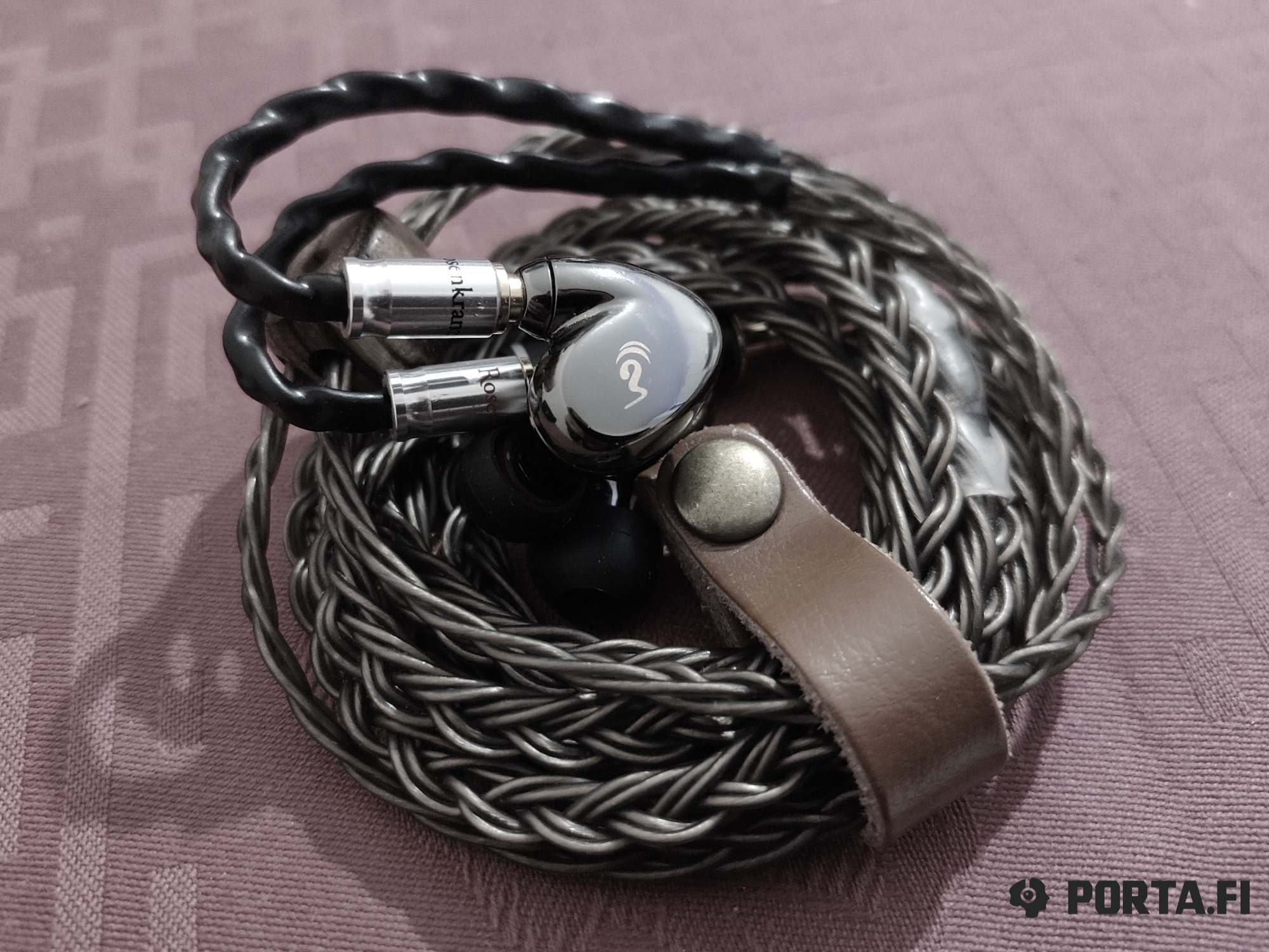
Lows have notable, distinctive and impressive accent. Nevertheless, slams, being more distinctive and massive do not lack thickness. We get quite weighty and massive presentation. In terms of technicality IEMs are quite good. Due to good control bass is not boomy and copes with compositions of different genres well. Not flawless, but well. Of course the accent can be easily noticed and bass builds solid and monolith foundation both for stadium rock and pathos rap, as well as folk and blues.
Mids are laid back. They however are noticeable due to tending to micro details. This way the IEMs transmit the peculiarities of this or that instruments without sacrificing important parts of composition. As a result IEMs show emotions through micro details. They underline and force them, but it’s their kind of tuning.
Highs have distinctive accent to compensate bass. Not to the extent when the IEMs are bright but enough to bring some room, sparkling and aggression where it is needed. And enough for headphones to be piercing for those who are sensitive to highs. So such people will probably won’t like them. The accent is moved towards the emotions and it’s notable that the IEMs lack naturalness in this part of frequency range. The headphones work with attack and decays well and there are no problems with the level of details.
The soundstage is good for the price, both in terms of width and depth. Of course it is not top-level, but it’s really good. There is good layering and separation. Of course the soloist gets most of attention, but IEMs don’t forget about other parts. The instruments are well positioned. They are somewhat bigger but still have enough room between them. This means that soundstage is more wide and massive than it really is, but without lack of weight and power.
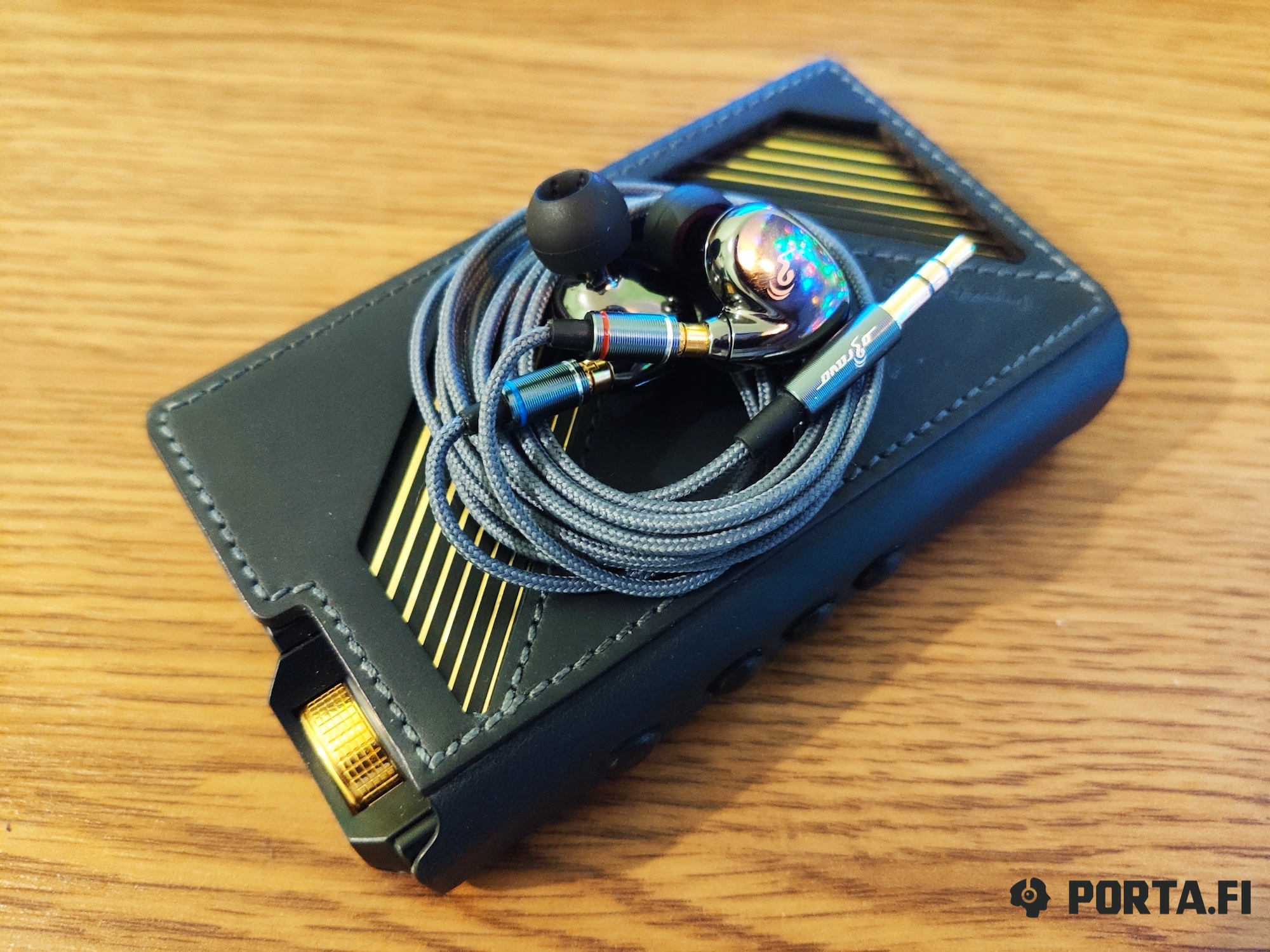
Comparisons
As for comparisons, they are really strange, since almost all headphones that go into this price tag are quite different.
CA Io — more flat, almost monitor two-driver IEMs. They are more natural and honest, but less emotional and powerful.
Many people want to compare Cupid with hyped Tin, probably because of presence of planar transducer. But the tuning is very different from P1 and P2, and besides there is also a dynamic transducer. So it’s more like comparing apples and oranges. Especially given that Tins usually require non-portable amplifications to sound well. But as long as comparisons might end up in commentaries, I will do this here in review.
Tin P1 are dry, light and more tending to micro details. On one hand the frequency response is different, on the other — less convincing and involving, as well as less emotional presentation.
There is a clear lack of body throughout whole frequency range, especially mids and lows. The bass has less depth but it is more shapy, however lacking variation. The soundstage is less deep and the same in terms of width.
Tin P2 has the opposite situation. These have bass but other parts of FR is laid back.
There is less bass, but it’s not only the lack of weight. There is also less depth and thickness. It’s funny but that Cupid has more bass, but it’s not muddier, but thicker and better transmitting slam characters. P2 sound fatter and warmer, lack control and as a result less variable slams. oBravo dynamic transducer does it’s job. Mids are less detailed with more warmth and weight, so the choice is simply a matter of taste. Highs are even simpler. There is a choice between almost absence and slight lack of naturalness. Cupid are more detailed, quicker, more technical and better in attacks and decays. P2 win in being less critical to recording quality. P2 soundstage is less wide with worse instrument separation and layering. If Cupid play wide, P2, on the contrary, are more intimate, so it is again the matter of preference.
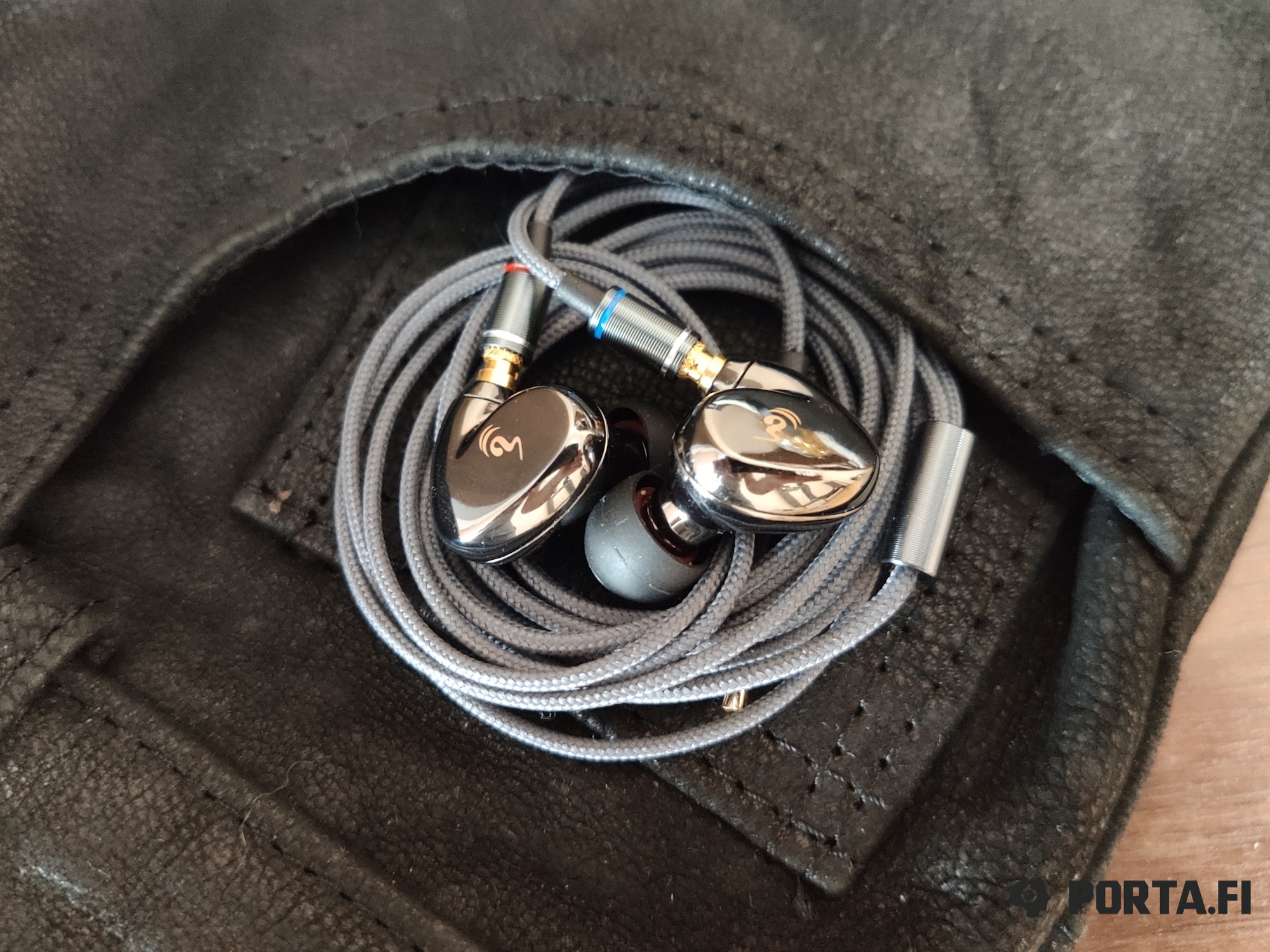
Conclusions
oBravo Cupid are really interesting. Sacrificing some naturalness, they benefit in involvement and effect, organically showing main things in the composition and bringing emotions up front. And they are foundation of any music.
Translated by: Vadim Kolchev

